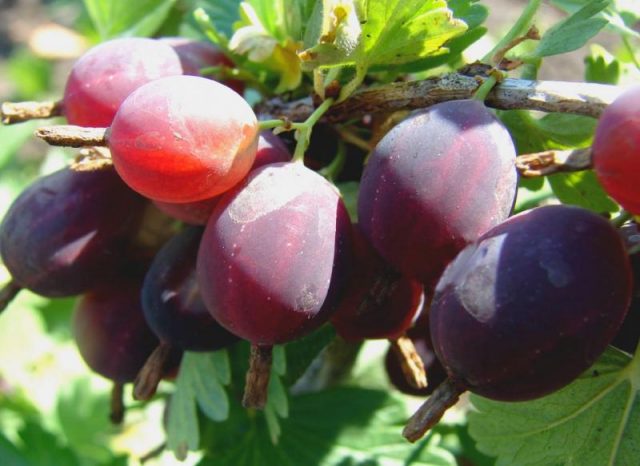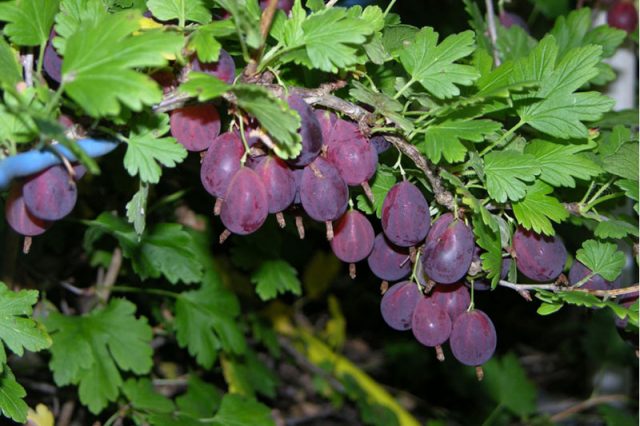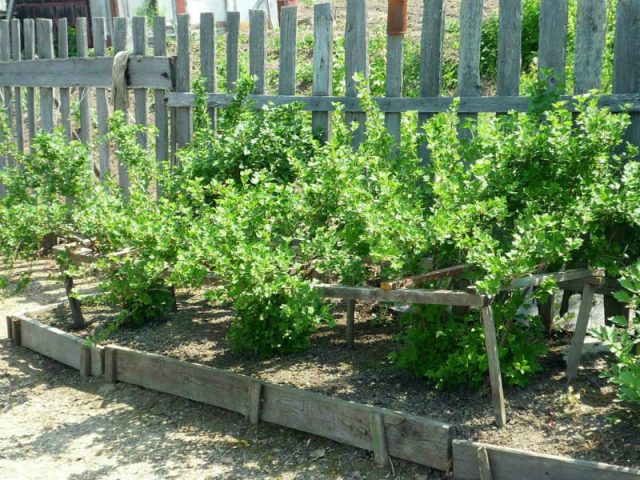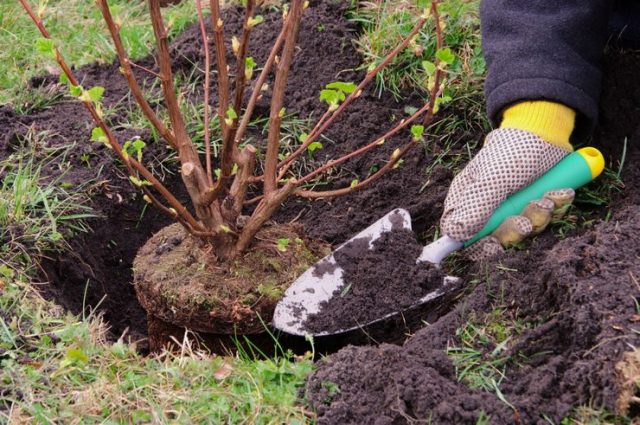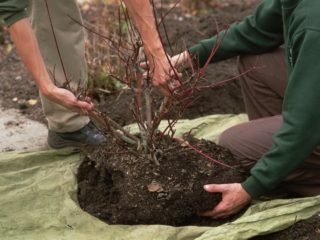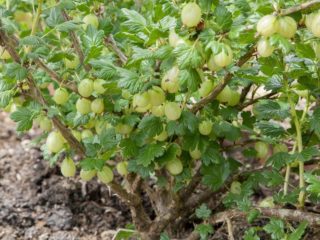Content
Gooseberry Date is the progenitor of many modern varieties, since it was bred a long time ago, and also has a number of valuable qualities. The plant has other names: Goliath, Green Date, No. 8.
Breeding history of the variety
Gooseberry Date is bred by Dutch breeders, but the originator is not registered. On the territory of Russia, the variety began to be cultivated since the times of the USSR, the so-called "folk subspecies" is made from it. It grows in all regions of the country: from Vladivostok to Moscow.
Description of gooseberry variety Date
The shrub is vigorous, spreading, leafy, up to 2 m high. The branches are powerful, strong, arched or straight. Shoots are covered with medium-sized thorns, single, rarely double, they are absent at the tops. The root system is embedded into the ground up to 2 m.
The foliage is medium in size, glossy, bright green in color. The color remains until it falls off. The shape of leaves on vegetative shoots is somewhat different from floral ones. The leaf plate has a slight wrinkling. The denticles along the edge are large, obtuse.
The ovaries of the flowers are the same, pale green, omitted. Inflorescences are small, white, with a noticeable green tint, drooping.
The fruits are round or oval, smooth, green in color. The average weight of gooseberries is 15–20 g. The rind is dense, covered with a purple blush. On the sunny side, the pigmentation on the berry is darker. The pulp is juicy, sweet, with a characteristic sourness. The percentage of sugar in the berry is 9%, but in a rainy summer, the fruit grows at a lower rate.
Characteristics of the variety
Gooseberry Date is a late-ripening, self-fertile variety, that is, it can form new ovaries after self-pollination of flowers. If you plant several bushes of this variety next to each other, then the yield will increase accordingly. The plant is capable of developing rapidly and giving new shoots. Gooseberry fruits of the Date variety can be obtained only 4 years after planting. At the age of 8–10, the moment of active fruiting comes. Basically, the life cycle of the date gooseberry is 25 years, however, according to gardeners, the duration is longer.
Drought resistance, frost resistance
Berry culture has high frost resistance. It can withstand severe winters with temperatures down to -35 ° C. Thanks to the powerful root system, it easily copes with drought, but a long period in the absence of moisture will negatively affect the size of the fruit. Excess water in the soil is also a negative factor for the full fruiting of gooseberries. It is not recommended to plant it in lowlands and in areas with a close occurrence of groundwater.
Productivity and fruiting
According to the description of the gooseberry variety Date, the berries ripen late. The period of technical ripeness begins in the second half of July, and full ripening occurs in mid-August. It is preferable to harvest in stages, as the fruit ripens.On the lower branches, the berries ripen a little later than those on the illuminated part of the shoots. An average of 8-10 kg is harvested from one bush.
On fertile soil, an adult date gooseberry bush is capable of producing a crop of up to 25 kg.
Application area
The dense peel of the Date gooseberry protects the berries from cracking. Therefore, it is good to transport them over long distances and maintain them without losing their shape. The fruits are used for the preparation of marinades, marshmallows, jellies, preserves, compotes. Used gooseberry varieties Date for winemaking.
For canning, it is recommended to pick berries at the stage of technical maturity, which falls at the end of July. For table use, there is no need to harvest the gooseberries right away. It can remain on the shoots and crumble for up to 20 days without compromising the flavor of the berries.
The indicator assessing the degree of suitability for storage and transportation of the gooseberry variety Date is high.
Disease and pest resistance
The Date gooseberry variety is not a hybrid. For this reason, a typical disease of berry crops is typical for him - powdery mildew. To protect the plant from this ailment, it should be planted in well-lit areas. In general, the immunity of gooseberry dates is weak. But pest resistance is high.
Advantages and disadvantages of the variety
Gardeners have been planting dates gooseberries on their plots for more than a dozen years without changing the variety. Some types have long been forgotten, but this one is in demand and relevant today. The main advantages of the berry bush:
- long fruiting period;
- stable, high fruiting;
- adaptation to adverse weather conditions;
- long shelf life;
- fruit size;
- self-fertility;
- the possibility of long-term growth in one place without loss of basic qualities;
- sweet berry taste.
The disadvantages of the variety include:
- susceptibility to American powdery mildew;
- the presence of thorns;
- late ripening of berries.
Gooseberry planting rules
The cultivation of the Date gooseberry variety begins with a competent planting. Therefore, it is important to know: the place, the optimal time, and also what the process itself looks like.
Recommended timing
Planting a gooseberry variety Date is advised to count on autumn, even in temperate climates. The most favorable time is the third decade of September or the first days of October. Young gooseberry seedlings have time to adapt to a new place before the onset of cold weather, and in the spring the bush will quickly start growing. It is important to plan the procedure so that there is about 2 weeks before frost.
Spring planting begins early, immediately after the thaw, around March, and in April it will be too late. The main thing is to be in time before the start of the sap flow process.
Choosing the right place
Gooseberry Date reacts negatively to the neighborhood with black currant. Fruiting is noticeably reduced, the size of the berry decreases, and the development of the bush as a whole worsens.
Conditions for choosing a place for sowing:
- The site should be well-lit and sunny.
- It will be nice if you plant a berry bush in a windy place. This will reduce the likelihood of fungal infections. Also, the land dries faster after the snow melts.
- It is desirable to choose the soil with a neutral or slightly acidic pH. In acidic substrates, fruit growth slows down.
- Gooseberry varieties Dates grow well in loamy and sandy loam soils.
- The planting of bushes in lowlands, swampy soils, in places with a close level of groundwater is excluded. Since excess moisture can cause rotting of the root system.
Selection and preparation of planting material
Before buying a date gooseberry seedling, you should pay attention to:
- age - one- and two-year-old plants are suitable for planting;
- the roots should be elastic, flexible, without rot and damaged areas;
- branching - the thicker the young bush, the easier it will take root;
- the height of the handle is not more than 30 cm;
- lack of foliage and new shoots.
About 48 hours before the expected planting, the roots of a young gooseberry bush Date are placed in a container with a stimulating solution. To destroy possible bacteria and fungi, it is advised to add a small amount of potassium permanganate there, and 2 hours before the procedure, the rhizomes of the seedling are treated with a clay chatterbox.
Landing algorithm
Seedlings are purchased a week in advance, and preparation for the procedure begins 2-3 weeks before it begins. At the same time, they dig up the soil to a depth of 25-30 cm, removing weeds... Add to the soil:
- 8 kg of humus or manure;
- 2 kg of potash fertilizers;
- 4 kg of phosphate fertilizers.
The rate is calculated for 1 sq. m. Gooseberry bushes are planted on a quiet, cloudy day.
Further actions:
- Prepare a hole 40x40 cm and a depth of 60 cm. It is calculated that the distance between the currant bushes is 1-1.5 m.
- A seedling is placed in the recess and the roots are well spread.
- The plant is placed vertically to the surface of the earth. In this position, you should hold the date gooseberry seedling and sprinkle it with soil at the same time.
- The root collar should be 8-10 cm above the ground.
- From above, the soil is slightly tamped.
- Each bush is poured with warm water in a volume of 10 liters.
- The near-stem circle is mulched with humus or peat 10 cm thick.
Gooseberry follow-up care
Further care for the gooseberry Date implies the correct implementation of agrotechnical measures. Watering must be timely. These procedures are carried out up to 3 times a month. The depth of the soil soaking is 40 cm. Approximately 4–5 buckets of water should be poured under the bush. The main thing is not to miss watering at the main points: during the flowering period and the formation of ovaries.
No fertilization is required for the first 3 years after planting. And then annually, during the autumn digging of the trunk circle, humus, saltpeter, superphosphate, wood ash are added to the soil. In summer, organic fertilizing is recommended.
In order to increase the air permeability of the soil, loosening is carried out. It is advisable to carry out the first procedure before the growth of the bush, and then regularly about 5 times a year. Loosening depth under bushes - 7 cm, row spacing - 10 cm.
Closer to the end of autumn, preventive pruning is performed. Broken, diseased, dry shoots are removed, which will strengthen the date gooseberry and ensure lush flowering in spring.
Mature bushes can withstand cold weather, but young seedlings need shelter. Hilling with earth with a layer of 10 cm is applied, and the upper part is covered with an airtight material.
Diseases and pests, methods of control and prevention
The most dangerous disease for gooseberry dates is powdery mildew. It attacks the bush and fruits, making them unattractive, inedible and underdeveloped. As a rule, preventive measures are taken to prevent the development of the disease, such as:
- spraying with a bush with copper "Vitriol" or "Fitosporin";
- weed removal;
- collection of fallen leaves.
If a shrub of the variety has undergone a disease, then it is necessary to treat it with systemic fungicides, and burn the affected parts.
Conclusion
Gooseberry Dates compete with new hybrid varieties. Its advantages are: in simple agricultural technology, large-fruited and yield. A berry shrub is suitable for growing in central Russia. A clear drawback of the variety is the lack of resistance to powdery mildew.
Testimonials
